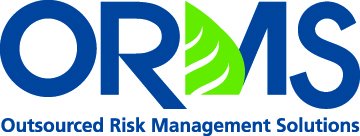What Does the Revised Phase I ESA Standard Mean for You?
What Does the Revised Phase I ESA Standard Mean for You?
In past articles we’ve discussed the unique and critical role the Phase I Environmental Site Assessment plays in commercial real estate due diligence.
The Comprehensive Environmental Response, Compensation, and Liability Act of 1980 (CERCLA) was passed to provide property owners, innocent landowners, and prospective owners with certain protections from liability resulting from prior environmental contamination. However, the owner must demonstrate that they performed proper due diligence in accordance with the federal All Appropriate Inquiry (AAI) standard, prior to the acquisition of the property. AAI requires that a Phase I ESA be performed on all such properties as the prudent level of due diligence.
More substantive than a Transaction Screen or Desktop Review, the Phase I ESA typically involves a review of property records, a site inspection, and interviews with the current property owners and occupants, local government officials, and nearby property owners. A Phase I must be performed by a certified environmental professional, in accordance with the ASTM International’s E1527 standard, which was first established in 1993.
ASTM last revised E1527 in 2013. Per CERCLA, the standard must be reviewed a minimum of every eight years. ASTM published the latest version, ASTM E1527-21 on November 1, just in time to meet the December 31, 2021 deadline. This version does include several important changes, and here is a brief overview of the most significant:
What’s Changing in ASTM E1527?
- Enhanced Historical Records Review: The most impactful change in the revised standard is a series of more stringent requirements for the historical research conducted on both the subject and adjoining properties. Per the 2013 standard, the environmental consultant must only review a sufficient number of historical sources to “achieve the objectives” of determining whether past use could have resulted in a Recognized Environmental Condition (REC). Under the 2021 standard, consultants most review at least four historical sources on both the subject and surrounding properties – including aerial photographs, topographic maps, fire insurance maps, and city directories—to determine if a REC is present. Additionally, for properties with a history of use in industrial, manufacturing, or retail, additional resources may be needed if they are readily available and determined to be useful by the Environmental Professional. Note that retail was added to this list with the latest revision.
- More Robust Title Searches: Whereas previous guidance allowed for searches that only went back to the last change in title to identify environmental liens and Activity and Use Limitations (AULs), under the new standard title records must be researched back to 1980.
- Revised and Clarified Definitions: The latest standard updates the definitions of REC, Controlled REC (CREC), and Historical REC (HREC) to provide greater clarity and consistency in interpretation. In addition, new appendix provides a detailed and helpful explanation of an REC. Clearer definitions of terms such as “likely,” “property use limitation,” and “significant data gap” are also included.
- Recognition of Emerging Contaminants: Concerns with the environmental and health impacts of contaminants like PFAS (per- and polyfluoroalkyl substances) have been in the news for several years. Although PFAS are not yet recognized as CERCLA hazardous substances, the revised standard adds PFAS and other emerging contaminants to its list of “non-scope issues” to be considered in the environmental review. Separately, ASTM has just released a new standard addressing PFAS concentrations in water supplies.
- Clarification of the Useful Life of a Phase I: Per AAI, certain aspects of the Phase I, including the site visit, interviews, liens search, and government records review must be completed within a 180 day window prior to property acquisition, and the entire report must be updated after a year. The latest standard now requires the dates these various acts were completed to be included in the report, to make tracking of expiration dates more manageable.
What Should Lenders Do Now?
Following ASTM’s publication of E1527-21 on November 1, 2021, the EPA began a review of the standard to ensure compliance with federal AAI regulations under CERCLA. That review is expected to take anywhere from a couple of months to a full year. During the interim, lenders and environmental consultants have a few options to choose from for using or referencing the standard. Per the National Law Review, these options include:
- Continuing to use and cite the ASTM E1527-13 Standard until the EPA approves the new standard; or
- Choosing to use and cite the new ASTM E1527-21 Standard now; or
- Citing the prior ASTM E1527-13 Standard, while indicating that the Phase I ESA also incorporates procedures as prescribed in the new ASTM E1527-21 Standard.
As always, we recommend that CRE lenders thoroughly review the full text of ASTM E1527-21 and work with their qualified environmental risk professional to determine the best way to incorporate the new standard into their environmental due diligence processes going forward.
